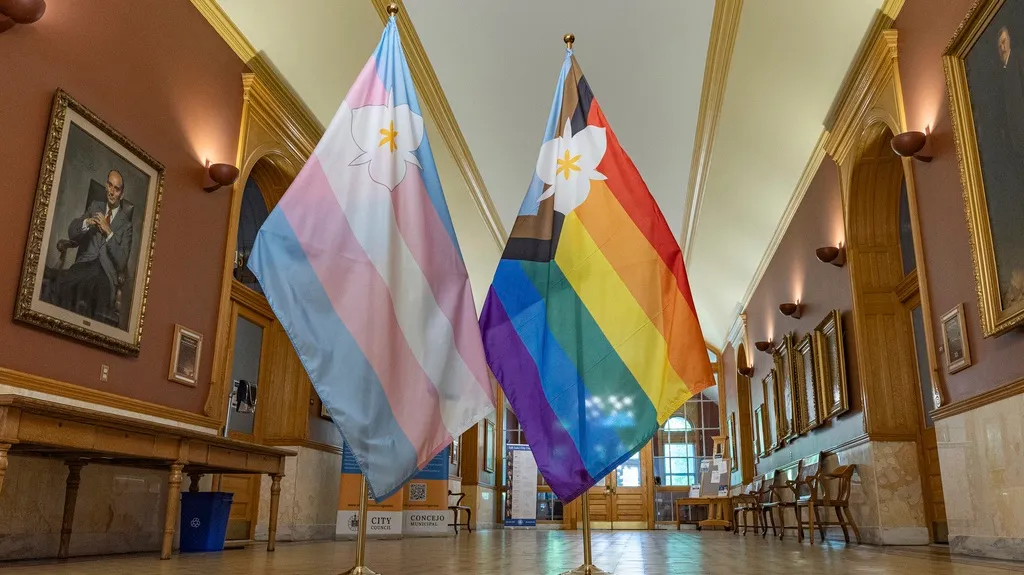May 23, 2013
Are College Aid Forms Becoming More Gay Friendly?
Kilian Melloy READ TIME: 3 MIN.
College financial aid forms will be more fair and inclusive to LGBT and other nontraditional families starting Jan. 1, 2014.
The catch: It might mean they'll receive less financial aid as a result.
The Department of Education announced the changes at the end of April. They include a switch to gender-neutral terminology, and a new way the government calculates family income in making aid decisions.
"All students should be able to apply for federal student aid within a system that incorporates their unique family dynamics," U.S. Secretary of Education Arne Duncan said in a prepared statement. "These changes will allow us to ensure taxpayer dollars are better targeted toward those students who have the most need."
The 2014-2015 Free Application for Federal Student Aid, best known by its acronym FAFSA, will collect income and other information from a dependent student's legal parents regardless of their marital status or gender.
That's new.
On current and past forms, students could only report the income from both parents if they were married and heterosexual.
Critics have said that the forms can be confusing to students with unmarried or same-sex parents. One of them, consumer finance website NerdWallet, recently introduced a tool to help students navigate the aid application. The NerdScholar FAFSA Guide came out about two weeks before the DOE announced the form changes.
"It is possible to get denied aid for filling out a FAFSA incorrectly," said Divya Raghavan, product manager for NerdScholar. "Putting inaccurate information can cause the government to reject your application."
The tool explains how to answer questions that sometimes assume a traditional marriage. For students with same-sex parents, it advises to list marital status as single and include the income of only the "custodial parent" - usually the one who makes more.
This is required even where gay marriage is legal, because a federal law (The Defense of Marriage Act) trumps state law. Raghavan calls the DOE move a "loophole."
"It allows them to continue to not recognize state-sanctioned gay marriage, but they also do not have to face the financial repercussions of that action by giving more aid to students with same-sex parents," she said. The changes will also prevent an upcoming Supreme Court ruling on DOMA from having any impact on the forms.
The DOE says "most students will be unaffected" by the new forms, but students with same-sex or unmarried parents are likely to see less aid, Raghavan said. When they can show two family incomes on the forms, it may seem as though they need less aid.
A financial aid officer at Florida Atlantic University said few students there struggle with the current forms, and the changes would improve fairness.
"According to the [DOE], collecting parental information from both legal parents will result in fair treatment of all families by eliminating longstanding inequities that were based on the legal relationship of the parents," said Tracy Boulukos, FAU's director of student financial aid.
She said the online forms also offer help and hints for every question, "simplifying the process." The worst issue most people encounter with FAFSA is forgetting to electronically sign the document, she said, which is easily corrected online.
Raghavan said the FAFSA still poses problems for some groups.
"Undocumented students are ineligible for federal aid, but many universities require them to fill out the FAFSA anyway," she said. That makes things difficult for students who don't want to disclose their immigrant status, or those without Social Security numbers.
"Students with an absent, negligent or abusive parent have to file dependency overrides with their individual universities, and the FAFSA requires financial information from both parents, which can be difficult for those who do not have a good relationship with a parent," she added.
Both Raghavan and Boulukos encourage all students to apply online anyway.
"Too many students don't fill out the FAFSA or assume they won't get aid. First-year students who are eligible for aid and fill out the FAFSA are 72 percent more likely to complete college than their peers who are eligible for aid but do not apply," Raghavan said.
Kilian Melloy serves as EDGE Media Network's Associate Arts Editor and Staff Contributor. His professional memberships include the National Lesbian & Gay Journalists Association, the Boston Online Film Critics Association, The Gay and Lesbian Entertainment Critics Association, and the Boston Theater Critics Association's Elliot Norton Awards Committee.




